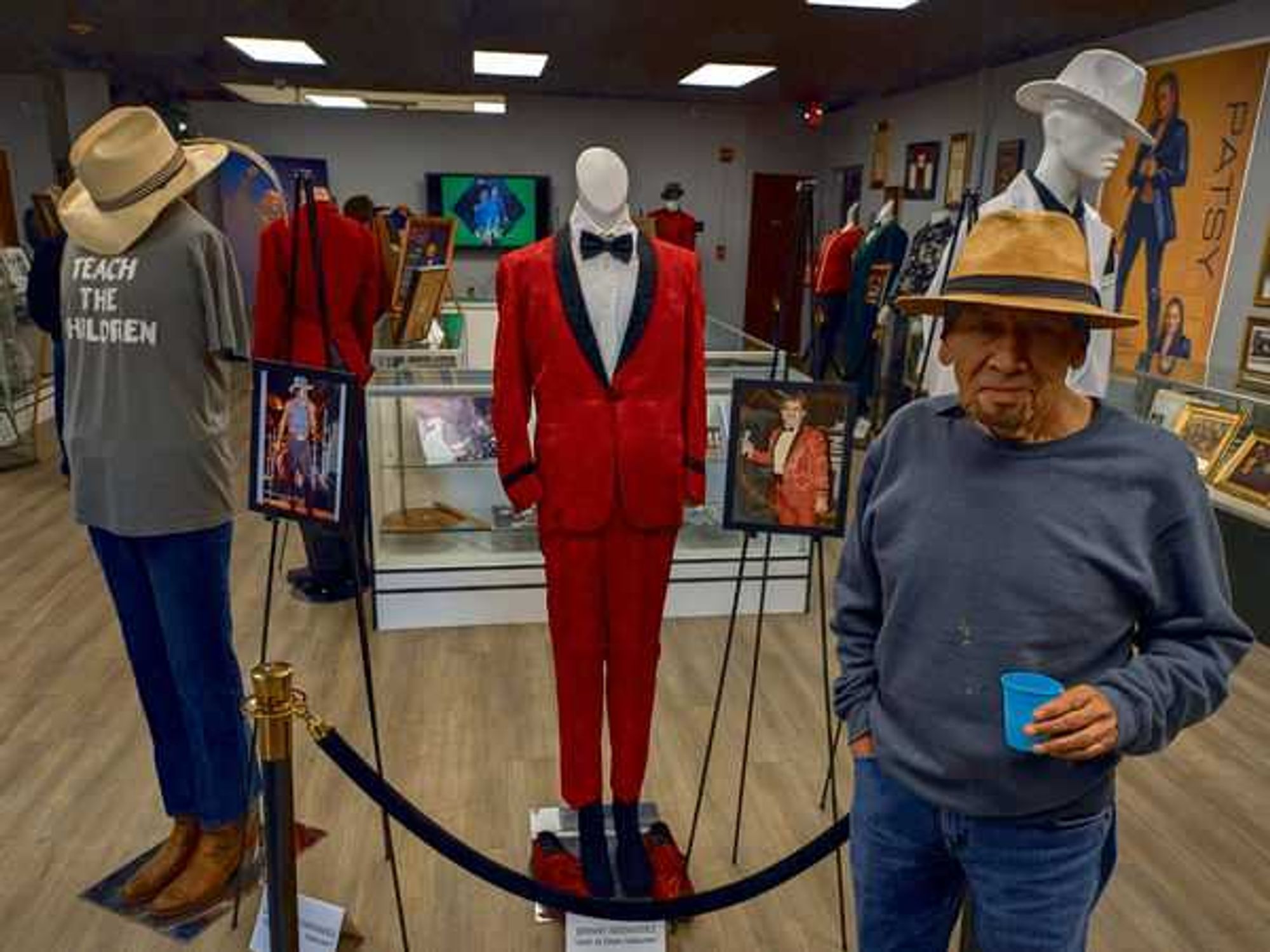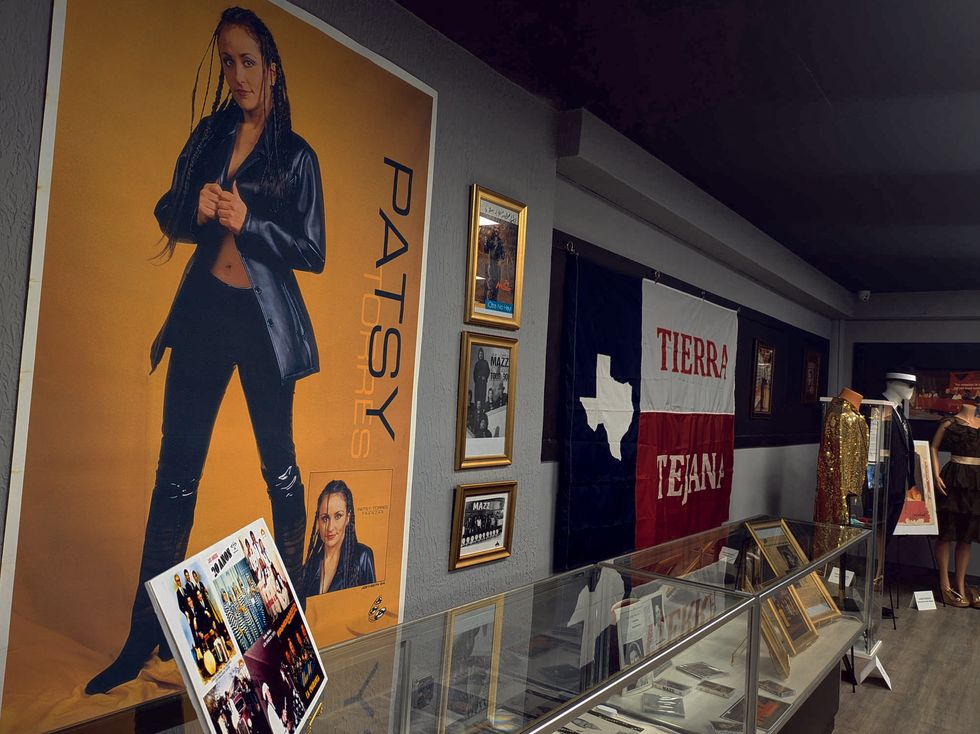Tattered Jeans
The pride of High Island: Discovering the lost Sea View Hotel
 The Sea View Hotel in its heyday.
The Sea View Hotel in its heyday. Closeup of Capt. Cade from the watercolor
Closeup of Capt. Cade from the watercolor An old post from the possible site of the two guest cottages.Photo by Katie Oxford
An old post from the possible site of the two guest cottages.Photo by Katie Oxford The cistern at the Sea View, with Katherine "Kitty" Cade, Capt. Cade’s daughter,at bottom; and Margaret Cade, his second daughter, just above.
The cistern at the Sea View, with Katherine "Kitty" Cade, Capt. Cade’s daughter,at bottom; and Margaret Cade, his second daughter, just above. Happiness, hats and the Sea View Hotel
Happiness, hats and the Sea View Hotel Leaving the Sea View, going to the train station before the 1915 hurricane. Mrs.E. W. Corder, wife of the Sea View manager, stands on the porch upper right.
Leaving the Sea View, going to the train station before the 1915 hurricane. Mrs.E. W. Corder, wife of the Sea View manager, stands on the porch upper right. Capt. Charles Taylor Cade on his horse (with Gulf beyond), in a photograph of awatercolor painted by Michael Gleeson in 1898.
Capt. Charles Taylor Cade on his horse (with Gulf beyond), in a photograph of awatercolor painted by Michael Gleeson in 1898. A view from the crest facing southwest, with a marsh and the Gulf beyond.Photo by Katie Oxford
A view from the crest facing southwest, with a marsh and the Gulf beyond.Photo by Katie Oxford
The Sea View Hotel on High Island has long disappeared but the oak trees still stand. Oh, how I wish that they could talk.
Thirty years ago, I went looking for the site on the crest of the salt dome at the east end of Bolivar Peninsula. Sure enough, at the end of a road was a chain-linked fence with a lock on the gate. Heart pounding, I climbed over it. The wooded area was dense with foliage. Grapevines as thick as your wrist wove through the oak trees like loose ribbons. Twigs and limbs, long fallen, snapped under my feet, sounding like cap guns that my brothers used to fire.
Walking further, I came across the remains of a small structure. A casualty, it seemed, from both fire and Father Time. Under a muscadine vine a white wooden frame (possibly one of the guest cottages) lay folded in on itself like a newborn foal.
“I just remember her sayin’ that they had a lot of dances there,” Kathy said. “That it was fun! It was happenin’, you know?”
Recently, I returned to the site. I had wondered how it had fared through Hurricane Ike in 2008. The chain-link fence was gone, as was the structure and most of the foliage. Now, stepping into the site felt like walking into a living room. The grapevines, once embracing the oaks, hung like dead snakes.
Captain Charles Taylor Cade (original owner) was bigger than life. In the foreword of Melanie Wiggins' They Made Their Own Law, he is described as, “a former sheriff, land speculator, and cattle rancher from New Iberia, Louisiana.”
Captain Cade, whom many called CT, came to High Island in the early 1880s and purchased a heap of land for raising a large herd of cattle — 10,000 head to be exact!
After the Gulf and Interstate Railroad (G&I) was built in 1896, Captain Cade built the Sea View in 1897. The railroad brought people in from Galveston and Beaumont. For a period all too brief, the Sea View would become known as a premier health spa and resort.
A memory better than photos
Few photographs exist of the Sea View but thankfully the local oldtimers had provided Melanie, the great granddaughter of the man that built the hotel, with more details. They confirmed that on the top was a look out tower. The first floor had a kitchen, dining room and a big ballroom and on the second floor were all the bedrooms. There were two guest cottages.
In addition to other amenities, the Sea View provided mineral spring waters, well known to be healing.
Kathy Payton Myers, a fifth generation Payton still living in High Island knew a woman (now deceased) who once worked at the Sea View. “I just remember her sayin’ that they had a lot of dances there,” Kathy said. “That it was fun! It was happenin’, you know?” Happenin’ indeed. As Melanie notes, “It was the place to go.”
Benny Barrow, owner of Benny’s Bait Shop in High Island, has close ties to the Sea View. His grandfather, a carpenter, had helped build the hotel. “They brought the lumber in from Louisiana and let it float to shore,” Benny reported. From there, wagons hauled the lumber up the hill.
Along with rare photographs of the Sea View, Melanie shared other treasures. One was a photograph (taken by Melanie) of a large watercolor painted by Joseph Gleeson in 1898. In it, Captain Cade is sitting erectly on his horse with a detailed cattle illustration in the background and the vast Gulf beyond.
Melanie also presented an original letterhead from the Sea View complete with a fine sporting illustration:
The Sea View Hotel
The great summer and winter resort on a hill 45 feet above the sea.
Mineral springs water unsurpassed, hunting, fishing and surf bathing.
Table served with fresh milk and butter, chickens, eggs, fish, oysters and wild game.
However, Captain Cade’s wife, Elizabeth, wasn’t keen on the place. Wiggins quoted her Aunt Betty as saying, “Grandma Cade wouldn’t have anything to do with the hotel. I imagine it was partly due to all the partying and drinking that went on there.”
During the hurricanes in 1900 and 1915, the Sea View served as a refuge. “It was an escape hatch,” Melanie said. Just after the 1900 storm hit, Captain Cade came to the rescue. “In big wagons that could roll through high waters,” Melanie explained, “he would go around the area, picking people up and bring them back to the hotel.”
Although the Sea View survived both storms, little else did. The hurricane in 1915 changed Bolivar Peninsula forever. With the railroad destroyed, visitors to the Sea View dwindled. After Captain Cade died in 1912, the Sea View underwent a series of different owners. Each occupant brought change to the hotel further dulling its grace and elegance.
The “tall white house” that navigators from the Gulf had once used as a landmark supposedly served as the headquarters for oilmen during the boom in the early 1930s.
During World War II the U.S. the Coast Guard occupied it. Stables were built to house their horse patrol, which consisted of more than 100 horses. Pat Daniels explains in BOLIVAR! Gulf Coast Peninsula that Coast Guardsmen patrolled the beach on horses, watching for enemy submarines in the Gulf of Mexico.
Tragically, in 1947 the hotel caught fire, allegedly caused by a vagrant. One report stated that it burned to the ground in 45 minutes.
Benny Barrow well remembers that day in March. He and his father were “trappin’,” down in the marsh when they looked up and saw the smoke. “It was black smoke,” he said. “We thought it was one of those oil field fires. There was a northwest wind and it was blowin’ hard.” When they got home around 5:30, they learned where the smoke came from. “We went over there and the place was just ashes by then,” he told me.
The Beaumont Enterprise for March 15, 1947, quoted an oldtimer who rendered a most fitting eulogy for the Sea View.
She took an era with her. Those were the good old days. But at least she went out in a blaze of glory.”
Author's note: In researching the Sea View Hotel, I visited the County of Galveston Museum and wish to thank Jackie and “Ms. Helen” for their kind assistance. I also had the thrill of meeting with Melanie Wiggins, who graciously shared precious photographs and details.

 The newly opened Totally Tejano Hall of Fame and Museum includes a growing collection of memorabilia. Photo by Edmond Ortiz
The newly opened Totally Tejano Hall of Fame and Museum includes a growing collection of memorabilia. Photo by Edmond Ortiz